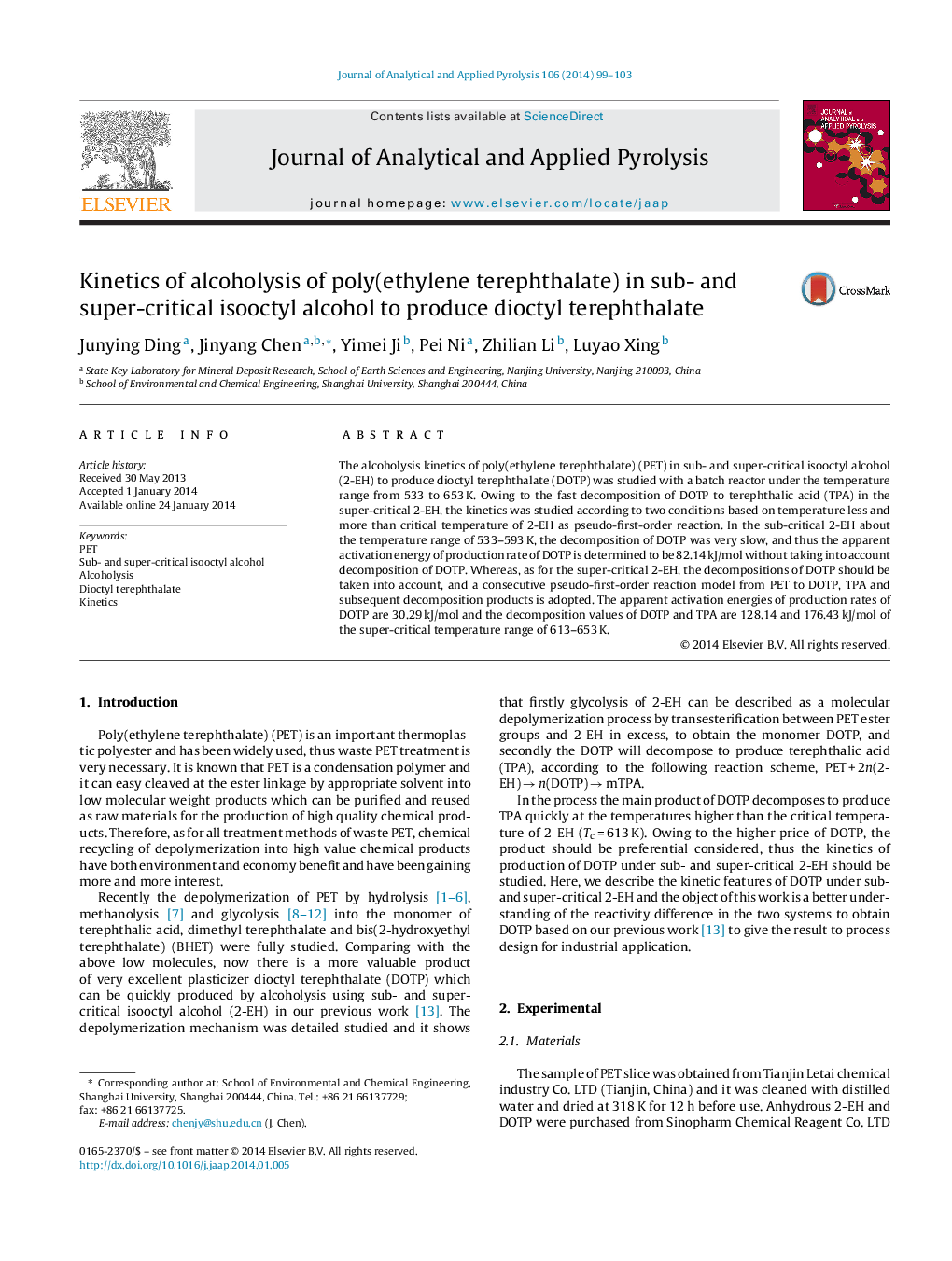| Article ID | Journal | Published Year | Pages | File Type |
|---|---|---|---|---|
| 1196862 | Journal of Analytical and Applied Pyrolysis | 2014 | 5 Pages |
•The reaction rate of PET increases greatly from sub-critical to super-critical 2-EH.•The Ea to produce DOTP decreases greatly from sub-critical to super-critical 2-EH.•The decomposition of DOTP is an advantage with super-critical alcoholysis.•To obtain high yield of DOTP should be controlled carefully in super-critical 2-EH.
The alcoholysis kinetics of poly(ethylene terephthalate) (PET) in sub- and super-critical isooctyl alcohol (2-EH) to produce dioctyl terephthalate (DOTP) was studied with a batch reactor under the temperature range from 533 to 653 K. Owing to the fast decomposition of DOTP to terephthalic acid (TPA) in the super-critical 2-EH, the kinetics was studied according to two conditions based on temperature less and more than critical temperature of 2-EH as pseudo-first-order reaction. In the sub-critical 2-EH about the temperature range of 533–593 K, the decomposition of DOTP was very slow, and thus the apparent activation energy of production rate of DOTP is determined to be 82.14 kJ/mol without taking into account decomposition of DOTP. Whereas, as for the super-critical 2-EH, the decompositions of DOTP should be taken into account, and a consecutive pseudo-first-order reaction model from PET to DOTP, TPA and subsequent decomposition products is adopted. The apparent activation energies of production rates of DOTP are 30.29 kJ/mol and the decomposition values of DOTP and TPA are 128.14 and 176.43 kJ/mol of the super-critical temperature range of 613–653 K.
